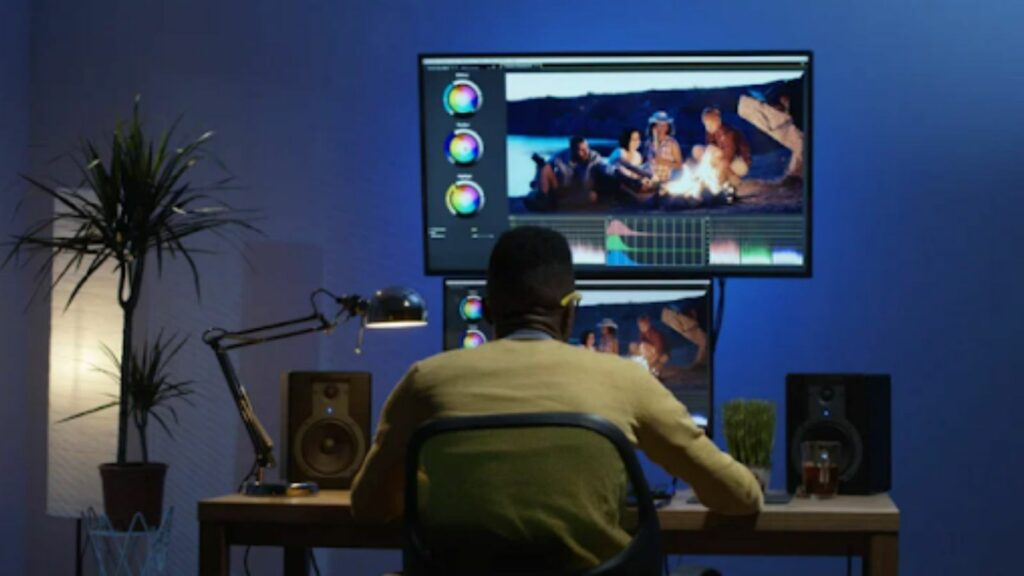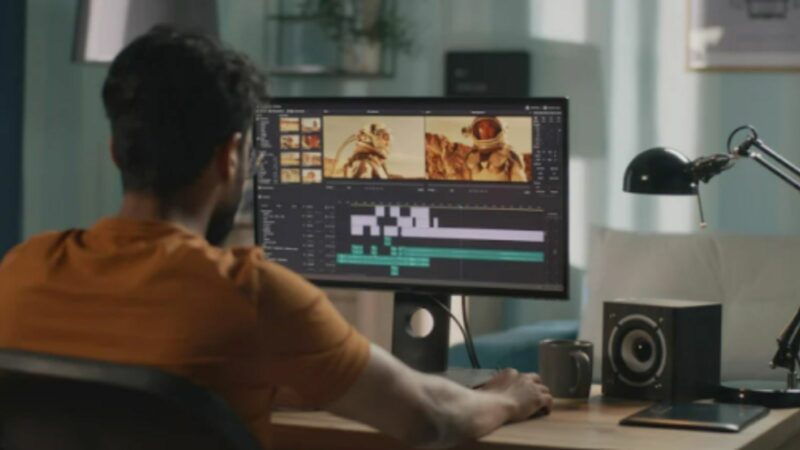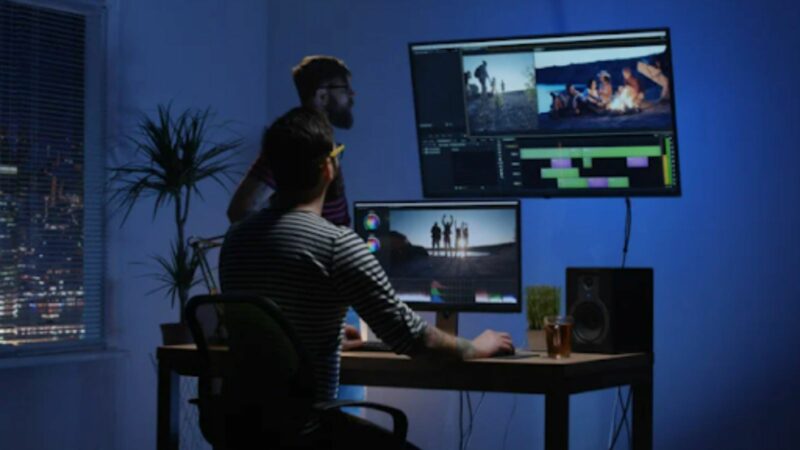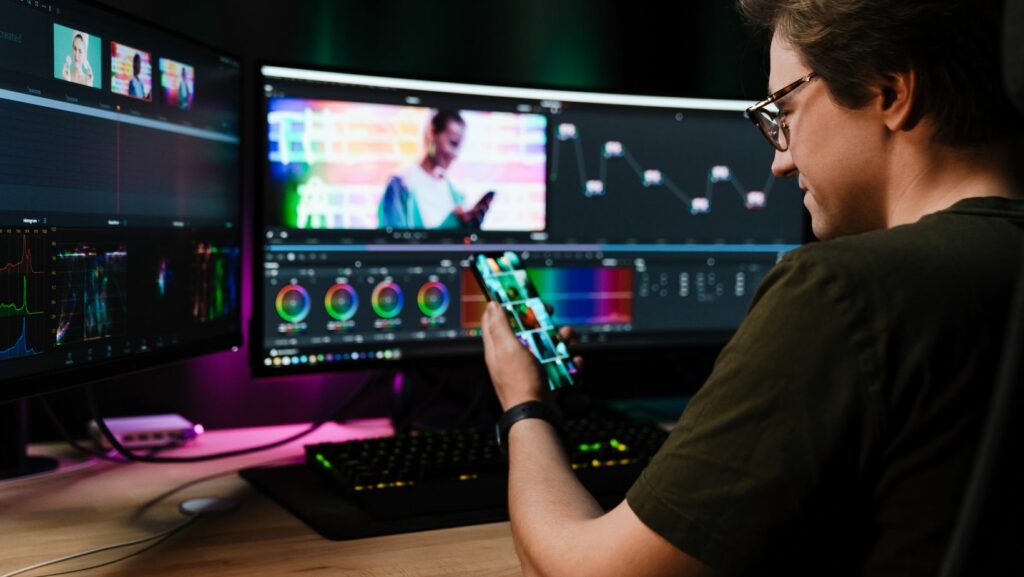
Thinking about starting in video editing? Welcome to our comprehensive guide to start your new exciting journey! It’s high time: video editing has become an essential skill in today’s digital age. The tasks are multiple: creating content for social media, producing a short film, or simply having fun with your home videos-knowing how to edit videos can make a huge difference. The right tools, like a reliable video editor for PC, can make the process smoother and more enjoyable. This guide will take you through everything you need to know, from the basics to advanced techniques, ensuring you’re well-equipped to start at once.
History and Evolution of Video Editing
Video editing has come a long way from the days of splicing film reels by hand. In the early days, editing was a labor-intensive process that required physical cutting and pasting of film strips. With the advent of digital technology, editing has become more accessible and efficient. The introduction of linear editing systems in the 1970s allowed for electronic editing, which paved the way for the non-linear editing software we use today. This evolution has democratized video production, allowing anyone with a computer to become a video editor.
Starting Your Video Editing Journey
Choosing the Right Video Editing Software
Selecting the right software is crucial for your success in video editing. Beginners might start with simpler solutions like iMovie or Windows Movie Maker, which offer basic features and a user-friendly interface. As you gain experience, you might want to explore more advanced soft such as Adobe Premiere Pro, Final Cut Pro, or DaVinci Resolve with extensive features that cater to more complex projects.
Basic Hardware Requirements
To edit videos efficiently, you’ll need a good computer with sufficient RAM (at least 16GB is recommended), a fast processor (preferably an Intel i7 or equivalent), and ample storage space (SSD drives are preferred for faster performance). A quality monitor with accurate color representation will add to the quality, and an external hard drive for backups is also recommended. A dedicated graphics card can significantly improve rendering times and overall performance.
Key Concepts in Video Editing
Frames and Frame Rate
Understanding frames and frame rates is fundamental to video editing. The frame rate, measured in frames per second (fps), determines how smooth the video appears. Common frame rates include:
- 24fps: Cinematic look, often used in movies.
- 30fps: Standard for TV and online video.
- 60fps: Offers smooth motion, ideal for sports and action footage.
Resolution and Aspect Ratio
Resolution affects the clarity of your video, with higher resolutions providing more detail. Common resolutions include:
- 1080p: Full HD, standard for most content.
- 4K: Ultra HD, offers four times the resolution of 1080p
- 8K: Provides even higher detail, used for high-end production.
Aspect ratio determines the video’s dimensions. The most common aspect ratio is 16:9, suitable for most screens. However, other ratios like 4:3 and 1:1 are used for specific platforms or creative effects.
Color Correction and Grading
Color correction involves adjusting the colors to look natural and consistent across all clips, while color grading adds style and mood to the video. Both are essential for creating a professional look. Understanding the basics of color theory and how to use scopes and histograms in your editing software.
Essential Tools and Software
Free vs. Paid Software
There are many video editing tools available, both free and paid. Free options like DaVinci Resolve and HitFilm Express are powerful but may have limitations in features or export options. Paid software, such as Adobe Premiere Pro and Final Cut Pro, offers more advanced features, regular updates, and better support. Consider your needs and budget when choosing between free and paid options.
Popular Video Editing Tools
- Adobe Premiere Pro: A professional-grade tool with extensive features that are suitable for advanced users. It integrates well with other Adobe products, making it a versatile choice for those already in the Adobe ecosystem.
- Final Cut Pro: Preferred by many Mac users for its performance and intuitive interface. It offers powerful editing capabilities and efficient workflows. Perfect for beginners.
- DaVinci Resolve: Known for its advanced color grading capabilities, it also offers robust editing tools. The free version is very capable, making it a popular choice for those on a budget.
Basic Video Editing Techniques
Cutting and Trimming Clips
Cutting removes unwanted fragments of a clip while trimming shortens clips to fit the timeline. Mastering these basics is crucial for working with pieces of raw footage that you combine together for further editing.
Adding Transitions
Transitions like fades, wipes, and cuts help to move smoothly from one clip to another. They enhance the flow and make the video more engaging. Common transitions include:
- Fade In/Out: Smoothly transitions from black to black.
- Cross dissolve: Blends two clips together.
- Wipe: Replace one clip with another using a sliding motion.
Audio Editing
Good audio is as important as good visuals. Learn to sync audio with video, adjust levels, and add background music or sound effects. Ensure your audio levels are balanced, and use tools like equalizers and compressors to enhance the quality.
Advanced Video Editing Techniques
Visual Effects (VFX)
Visual effects can transform your video. Whether it’s adding explosions, weather effects, or green screen backgrounds, VFX can take your project to the next level. Tools like After Effects can help you create stunning visual effects, but they require a good understanding of keyframes, layers, segmentation, masks and even AI-tools.
Motion Graphics
Motion graphics is useful for creating titles, lower thirds, and infographics that add a professional touch to your videos. Programs like Adobe After Effects, VSDC, or Apple Motion are great for creating complex motion graphics.
3D Editing
For more advanced projects, 3D editing allows you to work with three-dimensional models and scenes, offering a whole new realm of creative possibilities. Software like Blender and Cinema 4D used by professional motion studies are perfect to create and integrate 3D elements into your videos.
Color Correction and Color Grading
Difference Between Color Correction and Color Grading
Color correction ensures that colors are consistent and natural across all clips, while color grading adds a specific look or mood. Both are vital for professional-quality videos.
Tools for Color Grading
Software like DaVinci Resolve offers advanced tools for color grading. Learning to use these tools effectively can dramatically enhance your video’s visual appeal. Key tools include:
- Color wheels: Adjusting shadows, midtones, and highlights.
- Curves: Fine-tuning color balance.
- LUTs(Look-Up Tables): Apply pre-set color grades.
Audio Editing in Videos
Importance of Audio in Video Editing
Audio quality can make or break your video. Poor audio can distract viewers, while good audio enhances the overall experience. Pay attention to audio levels, clarity, and synchronization. Use high-quality microphones for recording and ensure you monitor audio levels during editing.
Tools like Adobe Audition and Audacity are great for editing audio. Techniques include:
- Noise reduction: Removing background noise.
- Equalization: Balancing frequencies.
- Compression: Controlling dynamic range.
- Reverb and effects: Adding depth and texture to audio.
Exporting and Sharing Videos
Export Settings and Formats
Choosing the right export settings and formats ensures your video looks good on all platforms. Consider resolution and frame rate that we have already mentioned, as well as codecs when exporting. Common export formats are:
- MP4
- MOV
- AVI
Platforms for Sharing Videos
Popular platforms include YouTube, Vimeo, and social media sites. Each has its own requirements and best practices for uploading videos. But don’t forget about simpler things, like Tik Tok and Insta Reels: such videos can also be created with the help of professional video editing soft.
Conclusion
Embarking on your video editing journey can be both exciting and challenging. With the right tools, knowledge, and dedication, you can create stunning videos that captivate your audience. Remember, practice makes perfect, so keep editing and experimenting with new techniques. The world of video editing is vast and ever-evolving, so stay curious and never stop learning.








